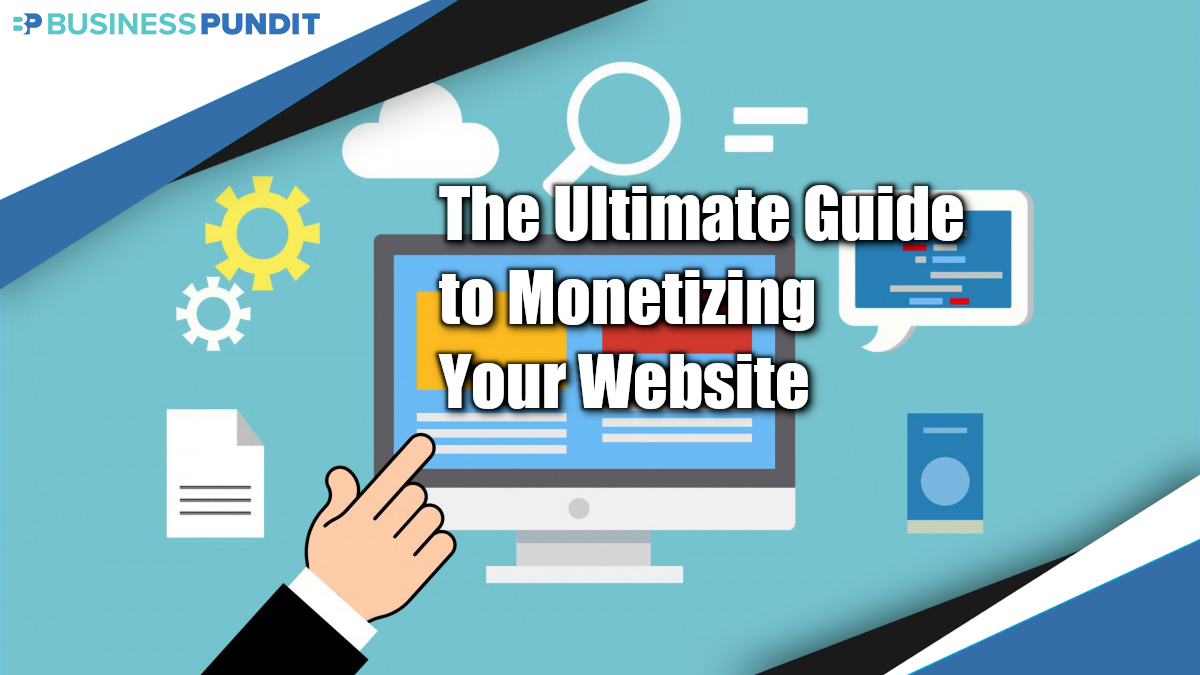
A business that runs on pure grit, passion, and determination is always bound for success–that has always been my mantra for the past two decades that I’ve been conceptualizing, testing, and practically laying a solid groundwork for a profitable online business.
The Internet is a vast workspace-slash-medium that connects you to limitless earning possibilities. With the right tools and, of course, the right mindset, you can build the life you want right at the comforts of your home.
But how? There are many ways you can monetize your website, but not all approaches may work for you. It’s a matter of weighing the pros and cons and deciding the risks you are willing to take.
To help you avoid a hit-and-miss approach when it comes to maximizing the full potential of your site, here’s a complete, unbiased guide to making money online.
Disclaimer

Let’s face it: building a website is a risk. It does not always guarantee you any returns. You can hit the jackpot or not, and you can make EXPENSIVE mistakes along the way. Been there, done that.
What’s worse, there’s no such thing as a one-size-fits-all approach to marketing or to succeeding in general, so you can never truly foolproof yourself when it comes to making small and big decisions for your site. And sometimes, it just takes one wrong turn to commit huge financial mistakes.
But the good news is, you can always minimize your risks by learning from the pros. Pros that can guide you in conceptualizing a business plan that speaks directly to you–this part is VERY important, and we will discuss it later on as we explore some of the best practices in creating a business plan.
For now, let’s focus on the business models that you can use to monetize your site.
Business Models that Can Monetize Your Website

When building an online business, it’s easy to be pushed towards one direction because of one motivation: profitability. Why else would you start an online business anyway?
But again, let’s not forget that we’re talking about earning “potentials” here. Nothing is guaranteed so when you’re exploring options, it always pays to put your drive on the front seat so you won’t have regrets even when push comes to shove.
Low Cost, High Profit Models
Online Coaching
Nowadays, traditional sit-down classes are being replaced by online courses that offer value, convenience, and accessibility. If this is something that floats your boat, you can take a closer look at two different formats available under this business model: live coaching and online training materials.
- Live coaching
Coaching sessions offered by successful platforms like Udemy, edX and Alison are basically one-on-one online software tutorials that charge hourly rates. Think of a digitized classroom setting (without any of your seatmates) and you’d get the point.
Pros: high hourly rates; interactive
Cons: on-going work involved; number of clients are limited to the amount of workload you can take
- Online training materials
The flexibility to use different mediums for the same purpose–that’s the beauty of making online training materials. Unlike live coaching sessions, these materials come in PDF, audio, or video files that are created prior training, and are intended to provide students the freedom to study anytime, anywhere.
Pros: less daily involvement needed; access to a wider market; higher potential to earn passively
Cons: lower initial rates; tight competition; lots of upfront work
Online Information Products
Our personal favorite: creating a digital product around something we’ve conceptualized, researched on, and finally created. But as a word of warning, this business model can drain your patience, time, and energy.
In our case, we always spend an enormous time testing our products before actually launching it because, as the good old adage goes, quality is always the best business plan.
So what are the digital products you can create? Well, virtually anything that can really add value to your target audience. From live webinars to eBooks to cheat sheets–sky’s the limit!
Pros: less daily involvement needed; access to a wider market; higher potential to earn passively
Cons: tight competition; lots of upfront work that include research, testing, and marketing
Low Cost, Low-Profit Models
Affiliate Marketing
Making money out of affiliate marketing is 50% highs and 50% lows, so if your site is new, this model can be quite tricky to try out.
How does it work? Say your site already has a huge following. If you’re good at reviewing products that are relevant to your niche, you can earn passively by simply inserting an affiliate link at the bottom part of your review.
The sweet deal: when someone buys the services or products via your link, you get a commission from the affiliate company you’ve tied up with. Just imagine how much you can earn overnight! Sites like Smart Passive Income and Wirecutter boomed via affiliate marketing.
Is it easy money? Yes, if your audience trusts you.
But, if for instance, you haven’t built up a strong reputation just yet, you might want to be careful in slipping affiliate links on your site because your audience might think you’re only promoting products because you’re getting paid–quite a rough spot to be in, to be honest.
Pros: less daily involvement needed; higher potential for recurring income
Cons: recommending products solely for the commission can lead to audience mistrust, which can negatively impact site traffic; product research is needed; less profitable than other business models
Donation-Based Monetization
Out of all the methods here, this is probably the most unstable income stream. The idea is simple: you produce content on your page, and if it adds value to your readers, they may (or may not) donate money to keep your site moving.
One strong example here is Wikipedia, a well-known platform that provides solid, timely content to its audience. Can you even imagine life without Wikipedia’s resources? We can’t!
Thanks to its informative and well-sectioned content, donations from readers all over the globe continue to pour in to keep this site’s wheels turning. Again, it’s always all about adding value and attracting the RIGHT audience.
When setting up donation options, you may use payment channels like Paypal or Fundly.
Pros: large traffic isn’t required but is an advantage; maximum control over site content
Cons: random income through donations; attracting high quality audience is a must
Advertising
“It’s not really what you sell, but how you sell it.” — says all the great advertisers who practically live by this mantra.
Needless to say, advertisement is the fuel that drives sales, and your platform can definitely use this as an advantage. How? By allowing pop-up ads on your site, which can help you get small commissions from clicks or sales.
What’s more, you can also maximize the earning capacity of your site by turning to digital advertising experts that can help you get access to premium advertising demands. Sound like a great deal?
Well, it actually is, considering potential sale recurrence, but there’s still a lot to consider on this side of the road, especially if your goal is to start clean and build a sustainable online business.
Why? Two words: POTENTIAL INCOME.
In terms of profitability, this model is not as generous as other channels on our list, with commissions per click averaging between a few cents and a dollar. This means that your site should draw in millions of visitors who can potentially convert into “clickers” or “buyers” before your wallet can actually appreciate this metric.
But since this is quite popular amongst site owners, let’s stick around a bit more so we can explore some of the options you have under this business model:
- Google AdSense’ Pay Per Click Advertising
How about getting commissions from clicks alone? Earning from Google AdSense, which posts ads on your sidebars, is one of the most practical ways to earn passively through advertisement. Again, we’re talking about “clicks” here, not actual purchases.
The best part: Google ALWAYS pays on time, and it has excellent customer support, making this medium a reasonable advertising option.
Pros: Google’s reliable technical support; real-time payments via Google; higher potential for recurring income
Cons: sidebar advertisements may affect the overall layout of your site; checking on click-through-rates can be time-consuming; low potential income per clicks
- Selling Ad Space
Just like Pay Per Click via Google AdSense, selling ad space also uses traffic and click-through-rates to gauge your earnings. However, between the two, this method is more time-consuming since you need to directly get in touch with advertisers, and you may not get the same level of support and reliability you’d get from AdSense.
The bright side: selling ad space on your site gives you more control over factors like pricing and other negotiation terms. So if your site has a solid audience, you can earn more through this medium.
Pros: Pay per click rates are usually higher; higher potential for recurring income
Cons: sidebar advertisements may affect the overall layout of your site; checking on click-through-rates can be time-consuming; directly contacting advertisers to offer your ad space can take a lot of time, effort, and energy
- Sponsored Content
Another profitable venture in the advertising department is sponsored content–a method where advertisers pay you in exchange for posting product-related content or links on your site. You can earn around 10 to 200 dollars per post, depending on factors like site traffic, social media reach, number of backlinks, and the likes.
At first glance, this seems like a great way to monetise your site, but you should be VERY cautious about embedding DoFollow links–which are mostly from advertisers for sponsored content–as Google can penalize you in case you accidentally embed it on your site.
Pros: rates are usually higher; potential for recurring income
Cons: Google may penalize you if you use DoFollow links
Mid Cost, Mid Profit Model
Membership Websites
Ever been to a bar’s VIP area? Or maybe you’ve flown first-class? Well, we haven’t yet, but we have a general idea of what these spaces offer, and why they’re so expensive. That’s just like membership websites, but with distinct differences.
An upgrade from the donation-based monetization model, a membership website gives you more control over your cash flow. It works like a regular profit-making site where you offer free site access to your audience (and hopefully give them a welcoming feel). But this time, you are keeping entry to certain sections limited to your members or subscribers.
You can step up your ball game by creating a clean site layout that delivers a clear CTA just like what Birchbox, Dollar Shave Club, and Blue Apron did. But before you do that, you have to first build up your site and make sure that its content is worth signing up for. Because if not, your audience is gonna think it’s complete B.S.
The best part: if your content is engaging, timely, and generally a perceived need for your target audience, you can earn big, just like Netflix and other subscription-based sites. It’s just all a matter of hitting your target user’s sweet spot!
And if you’re providing valuable information, you will find buyers willing to pay a monthly subscription fee. Don’t be fooled by the woes of traditional media – niche content sites like Equalizer Soccer and Sportslens leverage monthly subscriptions and other sponsorship opportunities to greatly enhance their earning potential.
Pros: start-up costs can shrink via a WordPress option; creates a real, sustainable business model; provides flexible payment schemes for members/subscribers
Cons: time-consuming to set up; high quality content is a must.
High Cost, High Profit Models
Software
Go where the wind takes you, or better yet, go where the wind doesn’t blow often–and in this case, that’s software development.
Just how many software developers have you met in the flesh? Not a lot, we suppose, and that’s for a good reason. Only a few went beyond in terms of designing and creating a successful software, making this a potentially huge income funnel.
Think of the legendary Bill Gates, Silicon Valley, or other iconic software developers and you’d know how big you can get once you become a success in this field. Invest cash, blood, and sweat, and be ready to cash out millions to billions in case your product becomes a hit!
But let’s not get our hopes up yet. Let’s pause and be realistic for a while. Are you a software developer? Do you know how to design any software and pull off the whole coding she-bang?
And, if so, do you have the patience to deal with marketing aspects that greatly impact sales? Are you ready for long days of work? Can you deal with rejections along the way?
Remember when we said that sometimes, it’s not the product, but how you advertise it? This also goes to selling software to digital companies.
Pros: highest potential for recurring income
Cons: existing skills and knowledge about software development is a must; takes a lot of time, effort, and perseverance; success is not guaranteed
High Cost, Low Profit Models
Sell Tangible Products
If you have a team that can create unique physical products that address the needs of your existing audience, you may want to explore this option. But, then again, are you willing to go through all the ups and downs of product development only to earn a small amount, or, in worse case scenarios, not earn at all?
There are so many uncontrollable variables when it comes to creating products, and this includes costing for raw materials and labor. Factor in cost-efficiency on your prospect buyer’s side, and your profit margin can significantly shrink. Before you know it, your high-cost efforts just turned into a pitfall–yes, this happened to us, too.
Well, let’s not be overly pessimistic here. You can still earn from this channel, but the question still remains: is it worth it?
Pros: if creating products is your strong side, you may find fulfillment in choosing this model
Cons: lowest income potential; laborious; expensive
Conceptualizing a Unique Business Idea that Sells

We may all be sailing the same waters, but we are not on the same boat–that’s one of the perspectives that kept us focused when we were fine-tuning our very own website concept. Mind you, it did help us muffle the outside noise from people giving unsolicited advice.
With so many “internet gurus” out there that tell you to do this and that, it can be really easy to get lost in a trance and stay stuck with ideas that:
- Don’t speak directly to you as a REAL person with a unique personality, passion, and skillset
Always go after your passion–at least, that’s what they say. And we believe in that, too. A mix of passion, personality, and skills can definitely get you to all the right places when it comes to monetizing your website.
Just for illustration, let’s take a close look at Ben’s story: Ben is an introvert. Unlike his outgoing twin brother, Ken, who vlogs for a living, traveling and documenting is not Ben’s cup of tea.
But, Ben is smart. Instead of keeping his artistic side hidden in the cabinet, he spent months honing his logo-making skills until he eventually pursued this career. Today, he earns 5x the monthly income of employees his age without leaving his computer table. The best part: he does exactly what he loves without sacrificing any part of his introverted self.
Isn’t that what online businesses are all about? Living life on your own terms.
But don’t forget our magic combo, too: SKILLS + PASSION
If there’s anything Ben’s story shows us, it’s that passion alone cannot survive without skills development. So as a word of advice: don’t just chase after sheer passion.
On a personal note, I love singing, but the melodies just don’t rhyme with my voice, so I decided to just put singing under the “hobbies” instead of the “skills I can profit from” section.
The golden rule: success is always about finding the perfect balance between doing what you love and doing what you’re good at.
Which leaves us to our next point: what are you actually good at?
Are you good at playing the guitar? Are you a great cook? Are you an excel wiz?
Make a list and create an umbrella of probable online business opportunities under each of your skill sets. For example, if you’re confident about your guitar skills, you can:
- Create a YouTube page
- Sell your skills by creating a platform that allows you to teach guitar lessons
- Create a platform that enables musicians to gather and earn online by teaching lessons or organizing live performances
- Focus on musical production that features collaborations
Whatever it is that you’re good at, the Internet is a big space, and there is surely something out there for you.
If you’re not convinced about your business ideas yet, ask your family and friends about your strengths.
It might sound weird, but most of the time, it’s them who know us more than we know ourselves. Not convinced?
Okay. Describe yourself! I’m sure it took you more than a second there. Now, describe your best friend. Yup. Now you get my point.
- Are not capable of generating sustainable income
If you built a site that’s not generating any income, then you’ve missed the whole point of creating a PROFITABLE and SUSTAINABLE online business.
For starters, you can create an online business by simply listing down the products and services that you actually pay for.
Do you pay for online tutorials and masterclasses? Does your job require you to frequently visit Grammarly and other writing-related platforms? Do you love swiping on eBay to look for new gadgets? Check your browser for the web pages that you usually visit–the ones that never fail to convert you into a buyer.
Then, ask yourself this question: “What do I love the most about these sites? What actually prompted me to click that “buy now” button?
You can also get more ideas from the people around you, specifically those who buy products online. After all, you are the market. They are the market.
- Don’t help you properly identify your target market, which inevitably affects costing and profitability
A great business model never leaves this important factor behind: target market.
Your target market ultimately dictates your initial costing, along with your business goals and expectations in terms of profitability.
If your goal is to attract high-end consumers, do you have the budget for it? There’s no point selling designer bags if your website doesn’t translate that sense of “luxury,” right? Right!
Also, what is your financial target and how do you plan on achieving it? Do you want to focus on getting a high revenue margin for single products? That’s the high-end market. If, on the other hand, you want quantity over quality of sales, your best target is low-mid income buyers.
Final Thoughts
Like success, business ideas don’t come overnight, but with careful research, conceptualization, and testing, you can build a site that generates not just income, but that sense of freedom that you can’t get from any day job.
Pause. Think. Make wise choices, but don’t be afraid to make mistakes. It’s all part of the process.